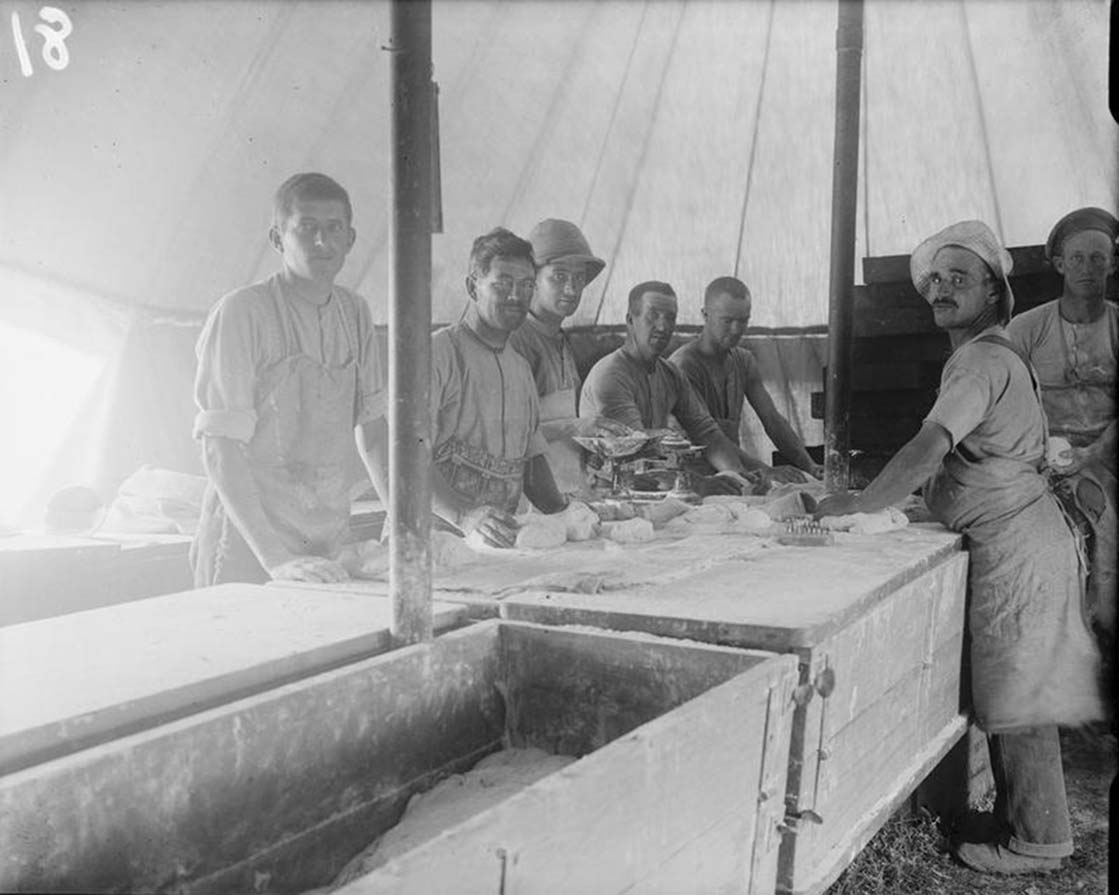

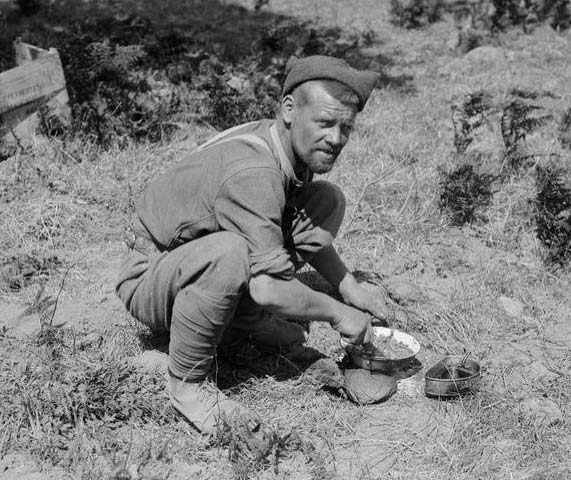
Living on a battlefield was never easy, and the main concerns for the men fighting at Gallipoli was simply staying alive. That said there were daily issues that were important to keep the body going in such a hostile environment, such as food and rest, as well as the occasional desire to do something frivolous and enjoy some leisure time. On both sides of the fighting line, the allied and the Turkish soldiers spent a lot of time thinking about food, and put a good deal of effort into breaking the monotony of life at the front and enjoying themselves.
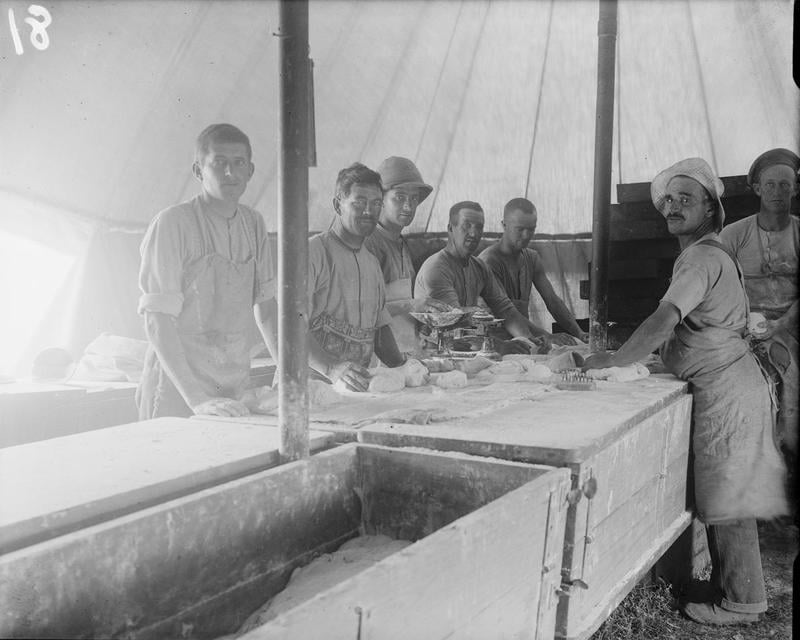
[Image: Bread making in tents on 'Bakery Beach'. The first issue of bread was made on 21 May 1915. (Imperial War Museum)]
A huge logistical problem for the allies was keeping its troops supplied with food and water. Having landed such a large force of men, in a relatively small area with no land access, everything necessary to keep the troops going had to be brought in by sea. Given that the allies believed the Gallipoli campaign would be short, no great level of thinking had gone into the diet of the soldiers. They certainly didn’t get a varied diet, and it seems that 99% of the food that was provided consisted of tinned meat, hard biscuits and jam. The key issue for the army was supplying the troops with food and as a result, preservation was favoured over all else. Tinned meat and dry biscuits that lasted months without going bad were the key. These could be carried by soldiers, cooked in trenches and would keep them alive.
The diet was a problem for the soldiers. First, its sheer monotony and poor quality led to feelings of demoralisation and second, the lack of vitamins available from the food lowered the soldiers’ resistance to dysentery and heightened their chances of suffering from scurvy. The diet was also very salt heavy. The canned bully beef, which was the staple part of the allied diet, was heavily cured in salt to ensure it was preserved and long lasting. However, the salted beef made soldiers more thirsty which was a real problem given the difficulties of supplying the peninsula with fresh water.
In Gallipoli, unlike the western front, the availability of field kitchens was limited. This meant that soldiers did not have regular access to cooked meals made for them, but more often than not had to cook for themselves with ingredients from their basic ration. Bakeries were established by the army at a number of the landing beaches, and this did lead to some variation in the diet. That said, many soldiers complained about the quality of the bread as they did about the unchanging nature of their diet. One soldier, Albert Facey, recalled: ‘The food we were given wasn’t very good. All we had to eat was tinned meat and dry biscuits. The meat was very salty and the biscuits were so hard that we had to soak them for a few hours to be able to scrape the outside off. We would eat this and then soak them again... Oh, what we would have done for a good meal!' [Albert Facey, A Fortunate Life, Freemantle, 1981, p. 262].
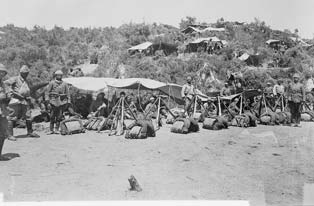
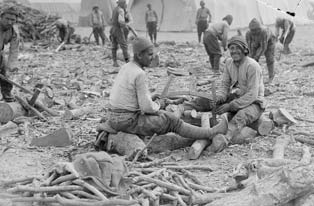
The Turks had many of the same problems as the allies, and clearly the biggest challenge was simply feeding such a big army based on the peninsula. The big difference between the two sides was the Turks were not reliant on bringing all that they needed ashore from the ocean. The Turks had supply lines that stretched back into their hinterlands and despite their best efforts, these were not broken by allied naval bombardments. However, while the Turks did have control of the land, a lack of war planning and organisation meant that it was difficult to keep the large Turkish army fed each day. While the Turkish army had access to a more varied diet, which included bread, honey, fruit and vegetables - which was far better than that available to the allies - the problem was that the supply was intermittent. As result there were periods, especially during the winter months of 1915, when the Turkish soldiers were starving. Allied observers wrote how Turkish soldiers rooted through waste dumps in the hope of finding left over food in discarded allied tins. By December 1915, in the face of the fierce cold, Turkish authorities feared a famine situation at the front as they struggled to feed their tens of thousands of troops.
Most Turkish food was cooked behind the lines of trenches, and the transported to the front by donkey. Turkish field kitchens were adequate for producing food, but there was no way of keeping the food warm as it journeyed forward. As a result the food often arrived in the trenches cold and congealed. When supplies were available, and the kitchens in full swing, the standard Turkish meal was lapa – rice cooked with sheep meat – accompanied by vegetables. As with the allies, the poor, and in the Turkish case, infrequent diet, led many men to succumb to illness and disease.

While it may seem counterintuitive to think about leisure activities during such a bloody and closely fought campaign as Gallipoli, soldiers did have periods of inactivity where they did seek out activities that they could enjoy. Some of this was basic, and often confined to the trenches. Here activities might be letter writing, storytelling, playing cards or else signing. Anything really to pass the time and to take the men’s minds off their daily struggle.
Away from the trenches, so long as they could secure a space that was safe from Turkish artillery and snipers, men from the various allied battalions sought out ways to enjoy themselves. Given that many men from major urban centres were spending time on the coast for the first time in their lives, swimming in the sea proved a great attraction (and also gave the men an opportunity to get clean). One soldier, William Davies recalled how he got into some difficulty when he went for a dip off Gallipoli in mid-1915: “We were allowed to bathe from there, and I went swimming and I was a good swimmer. I swam for a bit and then I found that instead of just swimming normally I was being towed away – there must have been a current that carried me towards Cape Helles again. I had a job to swim and finally I landed below the divisional headquarters about a mile away. I had no clothes on at all of course, absolutely cleaned up you know. And when I was passing divisional headquarters somebody came along and wanted to know all about me. Where had I come from, who I was, was I a good swimmer? I said, ‘Pretty good or I wouldn’t have landed.’ They let me go then and then I had that mile or so to walk up to where I’d left my clothes”.
Also popular were team sports, most notably soccer and cricket. Many of these games were very informal and took place wherever a space could be found. But some games were more formal affairs and took place on better ‘pitches’ on the beach. A Private Thomas Baker enjoyed the game of football and recalled that: “There was a piece of land where the teams used to play football and there was not one shell hole on that piece of ground, not one. It was hard and sandy somewhat and you could play good football on there. They’d got goalposts made up – they made them out of bits of trees, you know. They looked a bit raw, but they was standard sized – no nets, just the posts. They marked out along the side, you know, by marking in the sand for the lines, no whitewash or anything like that. We stripped right down, because we hadn’t got much in the way of clothes so we didn’t have to wear very much. One side wore shirts and the other side didn’t wear any, so that it was no trouble for the referee to sort them out. I must say that the football was quite good – we’d got two professionals in our team”.
In December 1915 at the time of the evacuation, men were ordered to play games such as cricket in full view of the Turks. The idea was that on seeing such a leisurely activity as a sporting contest the Turks wouldn’t suspect that a major evacuation of the peninsula was ongoing. Whatever the reason for the game, it is clear that such activities did entertain the men and lift their mood.
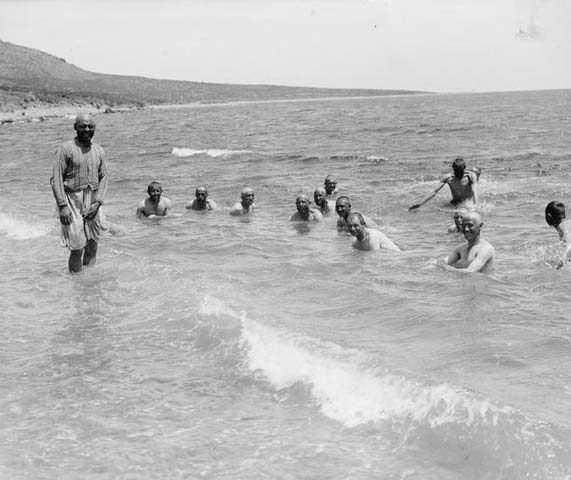
The Turkish soldiers were no different to their allied counterparts, and took whatever opportunities they could to enjoy some leisure time. Sleeping, writing and reading were common activities in the trenches, as was reading the newspapers. These came from Istanbul, and although they were often two weeks old, the papers kept the Turkish soldiers up to date with war news.
Music was a constant amongst the Turks in the trenches. Many seem to have brought instruments with them, such as the six string baglama or the cura, a three stringed lute. The musicians would lead the men in sing songs, and especially popular was the ballad Koroglu, the story of a Robin Hood style hero who avenges wrong doing.
Away from the trenches sports were popular amongst the Turkish soldiers. Wrestling was especially popular with each troop represented by a champion. Running was a common activity, as was rope pulling which allowed the soldiers to compete in teams.
Levels of illiteracy were high amongst the Turkish soldiers, so one of the ways in which messages and propaganda were delivered to them – but which also served as a leisure activity – was the staging of outdoor theatre. The plays were often based around patriotic themes, and also featured drama and comedy as well as headline news from the period.